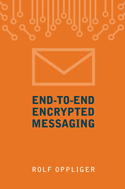Given the fact that AI tools like ChatGPT are able to generate texts on the fly, one may wonder whether we still need technical reference books (that are produced over an overlong period of time), or whether they may have become obsolete. As a book series editor and author, this question directly affects me and the prioritization of my work.
First, I want to make a difference between knowledge and understandig:
- Knowledge is the ability to recall information stored somewhere. In the case of human beings, such information is acquired through education and experience (in addition to information that is already present at birth). Anyway, the information is stored in some sort of memory and can later be retrieved from there.
- Understanding, on the other hand, not only requires knowledge, but also deepens it in terms of causes, meanings, interpretations, and implications. This is obviously more than information storage and retrieval, but it is difficult to precisely specify and nail down.
What IT and currently deployed AI technologies are good at is knowledge handling, i.e., information storage and retrieval, and the simulation of understanding. This simulation paradigm is at the core of the Turing test that has always been the benchmark for AI technologies (we are still looking for an alternative and maybe even better way to characterize intelligent machine behavior). Anyway, whether a machine is really able to understand is mainly a philosophical question and beyond this post.
Second, I want to use the terms “knowledge” and “understandig” to answer the title question. I therefore assume that the purpose of a technical reference book is to provide knowledge and understanding about a particular field of study. Knowledge can be easily provided artificially (there is no need for technical reference books here), but the provision of understanding is more involved and subtle. I think and firmly believe that somebody not understanding a particular topic is not able to provide respective understanding. As AI technologies are good at simulating understanding a topic without really understanding it, I think that a good technical reference book cannot be generated artificially (e.g., through AI technologies). In this context, “good” refers to a book written by an authoritative person, i.e., somebody knowing and deeply understandig the subject matter. If somebody wants to get into a topic, there is simply no alternative to a good technical reference book. Consequently, the title question must be answered in an affirmative way. There are, however, two caveats:
- On the one hand, the positive assessment only applies to the first technical reference books written on a partiular topic. As soon as there are several books, the AI machinery of copying and pasting text segments (maybe even modifying them to circumvent any copyright infringement) may work and serve the same purpose.
- On the other hand, the positive assessment not only applies to technical reference books, but also to other forms of knowledge and understanding transfer, such as overview articles, podcasts, audio books, learning videos, or whatever comes next.
Against this background, I think that it is still useful to invest in technical reference books – either on the producing or consuming side – and that the value of good books cannot be overestimated. This insight is soothing and affirmative for my work, and I therefore continue it with a good conscience.




